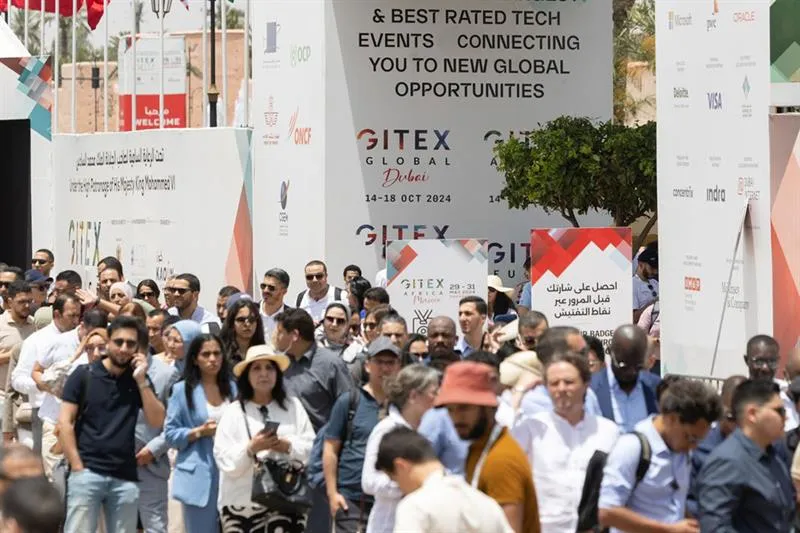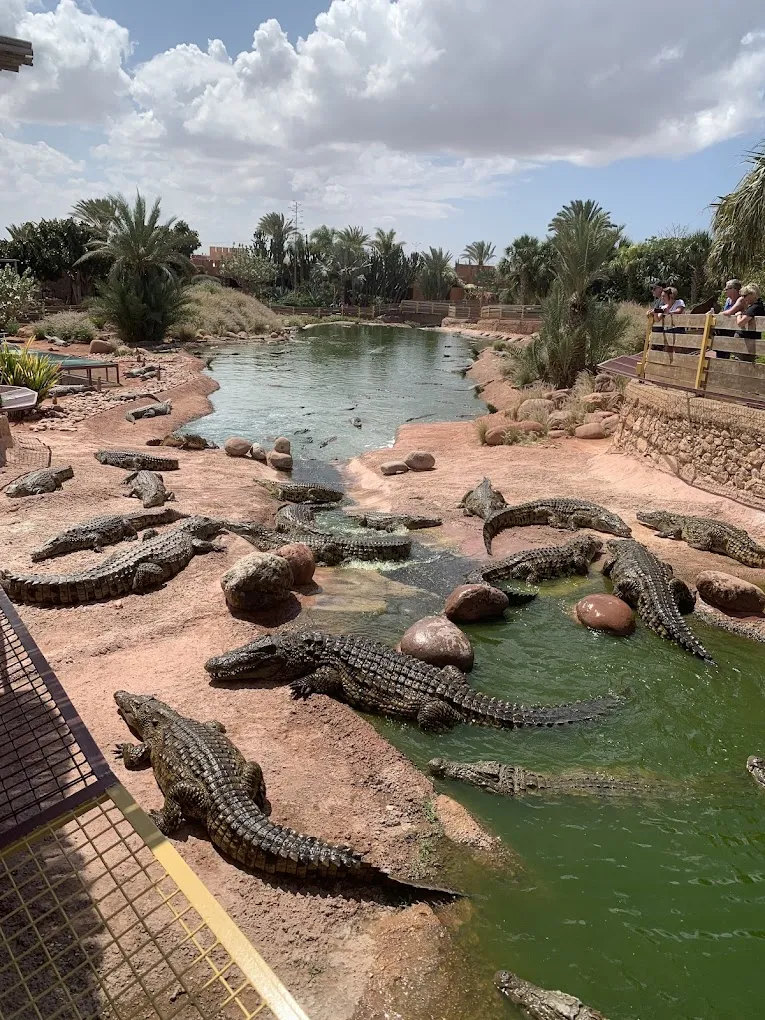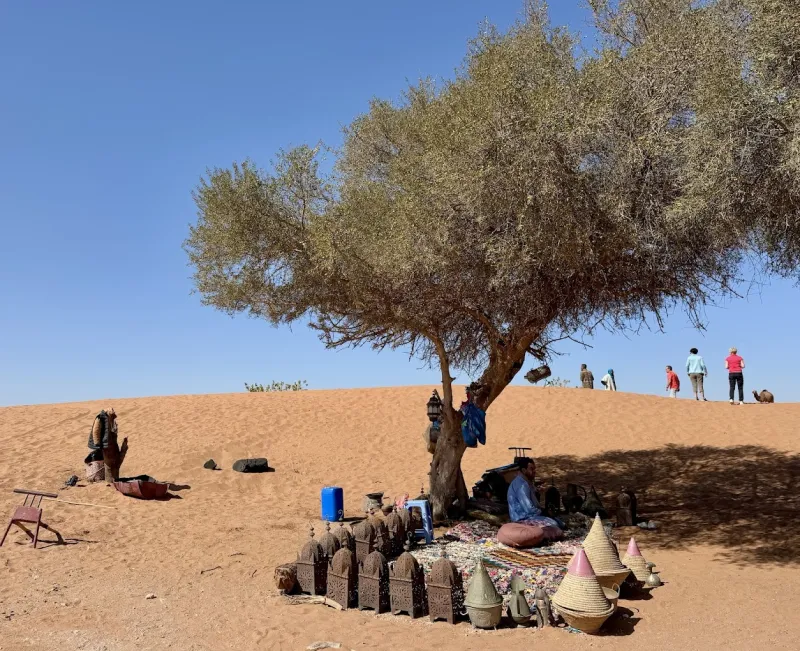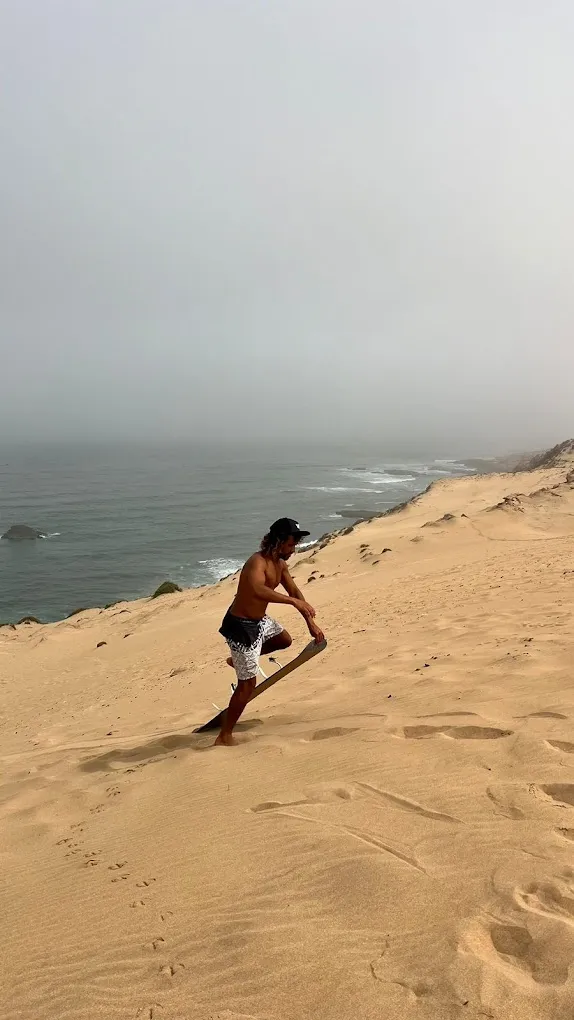Understanding Moroccan Culture: All You Need to Know
20 janv. 2025Morocco, a North African gem nestled between the Atlantic Ocean and the Mediterranean Sea, is renowned for its rich tapestry of cultures, traditions, and histories. This vibrant country serves as a melting pot where Arab, Berber (Amazigh), African, and European influences intertwine, creating a unique and diverse cultural landscape. Whether you're a traveler seeking to immerse yourself in Moroccan life, a student of cultural studies, or simply curious about this fascinating nation, this comprehensive guide delves into all aspects of Moroccan culture to provide you with an in-depth understanding.
Table of Contents
Introduction
Moroccan culture is a vibrant blend of ancient traditions and modern innovations. Its diverse influences have shaped a society that is both deeply rooted in its past and dynamically evolving. From the bustling medinas and serene riads to the melodic rhythms of Gnawa music and the tantalizing flavors of tagine, Morocco offers a sensory-rich experience that captivates all who visit or study it.
Historical Influences
Berber Heritage
The indigenous Berber (Amazigh) people have inhabited Morocco for thousands of years. Their language, traditions, and crafts significantly influence Moroccan culture. Berber influence is evident in the country's art, music, architecture, and social customs.
Arab Conquest
In the 7th century, Arab conquerors introduced Islam to Morocco, which has since become the dominant religion. The Arabic language and Islamic traditions have deeply intertwined with Berber customs, shaping the cultural landscape of modern Morocco.
European Colonialism
From the early 20th century until independence in 1956, Morocco was under French and Spanish colonial rule. This period introduced European architectural styles, educational systems, and administrative structures, adding another layer to Morocco's cultural mosaic.
Trade and Migration
Morocco's strategic location as a crossroads between Africa, Europe, and the Middle East facilitated extensive trade and cultural exchanges. These interactions have enriched Moroccan culture, introducing new ideas, goods, and artistic influences.
Language and Literature
Languages Spoken
Arabic: Modern Standard Arabic is the official language, used in formal settings and media.
Darija: The Moroccan dialect of Arabic, spoken by the majority, varies regionally.
Amazigh (Berber) Languages: Recognized as official languages, including Tarifit, Tamazight, and Tashelhit.
French: Widely used in business, education, and diplomacy due to historical ties.
Spanish and English: Predominantly in northern regions and tourist areas.
Literary Tradition
Moroccan literature reflects the country's diverse cultural influences. Classical works often focus on Islamic scholarship and poetry, while contemporary literature explores themes of identity, modernity, and globalization. Notable Moroccan authors include Tahar Ben Jelloun and Driss Chraïbi.
Religion and Beliefs
Islam
Predominant Religion: Approximately 99% of Moroccans are Muslim, primarily adhering to Sunni Islam of the Maliki school.
Religious Practices: Daily prayers, Ramadan fasting, Eid celebrations, and the Hajj pilgrimage are integral to Moroccan life.
Sufism: A mystical branch of Islam, Sufism plays a significant role, with many dervish orders influencing cultural and social practices.
Religious Tolerance
Morocco is known for its religious tolerance and coexistence. While Islam is the dominant faith, there are small communities of Christians, Jews, and other religions, contributing to the country's multicultural fabric.
Traditions and Customs
Hospitality
Moroccan hospitality is legendary. Guests are treated with utmost respect and generosity, often welcomed with mint tea and an array of traditional foods.
Family Structure
Family is the cornerstone of Moroccan society. Extended families often live close together, and respect for elders is paramount. Social gatherings and family events play a significant role in daily life.
Greetings and Etiquette
Greetings: A handshake is common among men, while women may greet with a kiss on the cheek among friends and family.
Respect: It is customary to address elders and authority figures with respect, using appropriate titles and language.
Gift-Giving: When visiting someone's home, bringing a small gift such as sweets or tea is appreciated.
Marriage and Celebrations
Marriage is a significant cultural event, often celebrated with elaborate ceremonies that include music, dance, and feasting. Traditional weddings may span several days, showcasing Moroccan customs and rituals.
Arts and Crafts
Zellij (Mosaic Tiles)
Zellij is a form of intricate mosaic tilework used in Moroccan architecture. Comprising small, hand-cut tiles arranged in geometric patterns, zellij adorns walls, fountains, and floors, reflecting the country's artistic heritage.
Wood Carving
Moroccan wood carvings are renowned for their intricate designs and craftsmanship. Carved cedar wood is commonly used in doors, furniture, and decorative pieces, often featuring traditional motifs.
Pottery and Ceramics
Moroccan pottery is characterized by vibrant colors and detailed patterns. Functional items like tagines and decorative ceramics are popular souvenirs, embodying the country's artistic finesse.
Textiles
From luxurious carpets and rugs to embroidered garments, Moroccan textiles are a vital aspect of the nation's cultural identity. Berber rugs, in particular, are prized for their quality and distinctive patterns.
Music and Dance
Traditional Music Genres
Gnawa: A spiritual music genre with roots in sub-Saharan Africa, featuring rhythmic drumming, chanting, and dancing.
Andalusian: Originating from medieval Islamic Spain, Andalusian music blends classical and folk elements, known for its melodic complexity.
Chaabi: Popular urban folk music that incorporates modern instruments and themes, widely enjoyed across Morocco.
Dance Forms
Ahwach: A traditional Berber dance involving synchronized movements and rhythmic clapping.
Chaabi Dance: Energetic and lively, often performed at celebrations and social gatherings.
Dervish Dance: Sufi-inspired movements that are both meditative and expressive, reflecting spiritual devotion.
Contemporary Music
Modern Moroccan music blends traditional sounds with global influences, including pop, rock, and hip-hop. Artists like Saad Lamjarred and Hatim Ammor have gained international acclaim, bringing Moroccan music to a broader audience.
Cuisine
Staple Foods
Couscous: Steamed semolina served with meat, vegetables, and aromatic spices.
Tagine: A slow-cooked stew prepared in a conical earthenware pot, featuring combinations of meat, vegetables, and spices.
Pastilla: A savory pastry filled with pigeon or chicken, almonds, and spices, often dusted with powdered sugar and cinnamon.
Harira: A hearty soup made with tomatoes, lentils, chickpeas, and meat, traditionally eaten during Ramadan.
Street Food
Moroccan street food offers a diverse array of flavors and textures, including:
Msemen: Flaky flatbread often served with honey or butter.
Sfenj: Moroccan doughnuts, crispy on the outside and soft inside.
B’stilla: Available in various forms, both sweet and savory.
Beverages
Mint Tea: Known as "Moroccan whisky," it is a symbol of hospitality, made with green tea, fresh mint leaves, and sugar.
Coffee: Often flavored with spices or served alongside traditional pastries.
Juices and Smoothies: Freshly squeezed from local fruits like oranges and pomegranates.
Regional Specialties
Different regions in Morocco boast unique culinary specialties, reflecting local ingredients and cultural influences. For example:
Rabat: Known for its seafood dishes.
Fes: Famous for its t'saout, a vegetable stew.
Agadir: Renowned for its couscous and fresh produce from the Souss-Massa region.
Clothing and Fashion
Traditional Attire
Djellaba: A long, loose-fitting robe with a hood, worn by both men and women.
Kaftan: An elegant, embellished garment often worn during special occasions and weddings.
Boubou: Similar to the djellaba but typically more ornate, worn by both genders.
Modern Fashion
Moroccan designers have gained international recognition for blending traditional elements with contemporary styles. Fashion in urban areas like Casablanca and Marrakech reflects a fusion of cultural influences, catering to both local and global tastes.
Accessories
Babouches: Traditional Moroccan slippers, often embroidered and colorful.
Headscarves: Worn by women as a symbol of modesty and cultural identity.
Jewelry: Intricate silver and gold pieces, often featuring traditional motifs and gemstones.
Festivals and Celebrations
Religious Festivals
Ramadan: The Islamic holy month of fasting, marked by nightly feasts and special prayers.
Eid al-Fitr and Eid al-Adha: Major religious celebrations involving prayers, feasting, and social gatherings.
Cultural Festivals
Marrakech International Film Festival: An annual event celebrating global cinema with screenings, workshops, and awards.
Gnaoua World Music Festival: Held in Essaouira, it showcases Gnawa music and attracts artists from around the world.
Fes Festival of World Sacred Music: Features a diverse lineup of musicians and artists performing spiritual and traditional music.
National Holidays
Throne Day: Celebrated on July 30th, commemorating the accession of the current king.
Independence Day: Marks Morocco's independence from France and Spain on March 2nd.
Social Structure and Family
Family Dynamics
Family is the cornerstone of Moroccan society, with strong bonds and hierarchical structures. Extended families often live close together, providing support and fostering a sense of community.
Gender Roles
Traditional gender roles are prevalent, with distinct expectations for men and women. However, urban areas are witnessing shifts towards more egalitarian norms, especially in education and employment.
Education and Literacy
Education is highly valued, with a strong emphasis on literacy and academic achievement. Morocco has made significant strides in improving access to education, particularly for girls and women.
Architecture
Traditional Moroccan Architecture
Riads: Traditional Moroccan houses with interior courtyards and gardens, often featuring intricate tilework and wood carvings.
Kasbahs: Fortified structures historically used for protection and defense, now often converted into hotels or cultural centers.
Mosques: Architectural marvels like the Koutoubia Mosque in Marrakech, known for their stunning minarets and ornate designs.
Zellij: Mosaic tilework used extensively in walls, fountains, and floors, showcasing geometric patterns and vibrant colors.
Modern Architecture
While Morocco honors its architectural heritage, contemporary structures also reflect global influences. Cities like Casablanca feature modern skyscrapers and innovative designs, blending tradition with modernity.
Modern Moroccan Culture
Cinema and Media
Morocco's film industry has gained international acclaim, with the country serving as a popular location for global film productions. Moroccan cinema explores diverse themes, from historical narratives to contemporary issues.
Literature
Contemporary Moroccan literature often grapples with themes of identity, modernity, and tradition. Authors like Tahar Ben Jelloun have achieved international recognition, bringing Moroccan stories to a global audience.
Technology and Innovation
Morocco is increasingly embracing technology and innovation, with growing sectors in information technology, renewable energy, and telecommunications. This shift is contributing to economic growth and modernizing various aspects of daily life.
Etiquette and Social Norms
Greetings
Common Greetings: "Salam Alaikum" (Peace be upon you) and responses like "Wa Alaikum Salam."
Handshakes: Common among men; women may greet with a handshake or a nod, depending on the context.
Hospitality
Moroccans are renowned for their hospitality. Guests are treated with generosity, often welcomed with tea and an array of traditional foods.
Public Behavior
Modesty: Dress modestly, especially in rural areas and religious sites.
Respect for Elders: Show respect towards older individuals and authority figures.
Quietness: Maintain a respectful tone, avoiding loud conversations in public spaces.
Photography
Permission: Always ask for permission before photographing individuals, especially women.
Restricted Areas: Certain areas, like military sites and some religious buildings, prohibit photography.
Conclusion
Moroccan culture is a vibrant and intricate tapestry woven from centuries of diverse influences and rich traditions. From the bustling souks and serene riads to the melodic rhythms of traditional music and the tantalizing flavors of Moroccan cuisine, every aspect of Moroccan life offers a unique and immersive experience. Understanding the depth and diversity of Morocco's cultural heritage enhances appreciation and fosters respectful interactions, whether you're visiting as a traveler or studying the country's societal dynamics. Embrace the warmth, hospitality, and rich cultural offerings of Morocco, and let its timeless traditions and modern innovations captivate your heart and mind.
Additional Resources
Books on Moroccan Culture:
“Morocco: From Empire to Independence” by C.R. Pennell
“In Arabian Nights: A Caravan of Moroccan Dreams” by Tahir Shah
Documentaries and Films:
“Casablanca” – A classic film showcasing Moroccan architecture.
“Morocco: The Mirage of Freedom” – A documentary exploring contemporary Moroccan society.
Cultural Centers and Museums:
Dar Si Said Museum (Marrakech): Focuses on Moroccan arts and crafts.
Museum of Moroccan Judaism (Casablanca): Highlights the history and contributions of Moroccan Jews.
Language Learning Resources:
Duolingo: Offers courses in Arabic and French.
Mango Languages: Provides Moroccan Darija lessons.
Safe Travels!
Embarking on a journey through Morocco's cultural landscape offers a treasure trove of experiences that blend tradition, artistry, and vibrant street life. Whether you're wandering through the historic medinas, savoring the flavors of Moroccan cuisine, or engaging with the warm and hospitable locals, Morocco welcomes you with open arms and endless possibilities. Embrace the adventure, respect the rich cultural heritage, and let Morocco's dynamic spirit leave an indelible mark on your travel memories.
Hi, I'm Camila Elise. I'm a passionate writer and design enthusiast at rents.ma, blending modern insights with the timeless elegance of Moroccan culture. Join me as I explore innovative ideas to transform your living space into a true reflection of your style.




